Stribog – Slavic God Of Winds Associated With Destruction, Harvest, Evil And Good
A. Sutherland - AncientPages.com - In Slavic mythology, Stribog was the god of wind, storms, and air and an ancient deity of the heavens. He was a connector of heaven and Earth.
People largely depended on his actions because he could bring the frost and, somehow, also wealth while giving away the right part of the deal to the right person.
Therefore, he was often associated with the distribution of riches.
The winds were seen as Stribog's grandchildren, but he had control over them, and according to the beliefs of the Eastern Slavs, he was requested for successful winds.
As a powerful weather god associated with the atmosphere, Stribog could control lightning, whirlwinds, hurricanes, winds, and storms over oceans and seas on Earth. Stribog could also change weather and disperse clouds, stop a long season of rain, and send Yarilo-Sun with a longer period of sunny weather to warm the fields and gardens with his rays.
Each kind of weather, in general, was under his power.
Stribog In Folklore
Throughout history, our ancestors praised and honored him as the destroyer of people's evil deeds and intentions. He also had power over stars, and like the other atmospheric deities, he was a heroic fighter and powerful destroyer.
He launched devastating winds and terrifying, powerful gales and usually did not enjoy recognition among people.
In folklore, he could carry off girls and destroy homes and fields. Air vortices were considered dangerous; therefore, a thunderbolt was usually called for help by terrified people who did not understand ominous atmospheric phenomena.
Throwing stones, sticks, or knives was also practiced, and many suitable spells were used. The Slavs also knew the concept of the wind as a soul, but mainly the souls of people who died of unnatural death.
 Stribog by Dušan Božić. Source
Stribog by Dušan Božić. Source
God Stribog, usually described as a thin older man with long, tangled gray hair and a very white-bearded beard, had many counterparts in various mythologies worldwide. He was often compared to the Hindu god Vayu (wind), a primary Hindu deity, the lord of the winds, who performed almost the same functions as the Slavic god Stribog.
Another counterpart was Ehecatl, the god of wind, very important in Aztec mythology and in Mesopotamian beliefs; Enlil was the Sumerian god of air, wind, and breath, while Njord (Niord) was a Vanir god of the seas, fishermen, ships and prosperity in ancient Norse beliefs, who was both feared and respected by fishermen and seafarers, as he ruled over the waves and winds.
Ilmarinen was originally the Finnish pagan god of the air. He is often regarded as the god of air and weather, and his functions are closely related to those of Stribog of the Slavs.
However, Slavic beliefs in the power of wind varied greatly. Some believed that the wind was good and even holy. It was given human form or personality; it was charmed, often invited to supper, and honored as a deity associated with death, war, harvest, evil, and good.
Stribog was treated independently as an atmospheric deity in Slavic folklore and mythology. However, it is worth mentioning that he often served as a helper for the principal gods of the pantheon.
It does not mean, however, that Stribog (or his counterparts, who were also masters of winds, being a personification of the powers of nature) is not mighty. Severe damages inflicted on man and his work attest to powerful winds present on Earth since the beginning of time.
Written by – A. Sutherland - AncientPages.com Senior Staff Writer
Updated on April 6, 2024
Copyright © AncientPages.com All rights reserved. This material may not be published, broadcast, rewritten or redistributed in whole or part without the express written permission of AncientPages.com
More From Ancient Pages
-
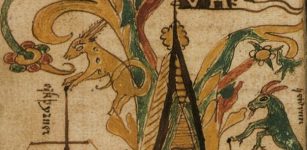 Eikthyrnir – Mythical Male Deer And Heidrun She-Goat Stand On The Top Of Valhalla
Featured Stories | Feb 11, 2019
Eikthyrnir – Mythical Male Deer And Heidrun She-Goat Stand On The Top Of Valhalla
Featured Stories | Feb 11, 2019 -
 Neolithic Ceramics Reveal Dairy Processing From Milk Of Multiple Species
Archaeology | Mar 15, 2023
Neolithic Ceramics Reveal Dairy Processing From Milk Of Multiple Species
Archaeology | Mar 15, 2023 -
 Mysterious Viking Gerdrup Grave – Burial Place Of Sorceress Katla And Her Son Odd Mentioned In The Eyrbyggja Saga?
Featured Stories | Mar 22, 2023
Mysterious Viking Gerdrup Grave – Burial Place Of Sorceress Katla And Her Son Odd Mentioned In The Eyrbyggja Saga?
Featured Stories | Mar 22, 2023 -
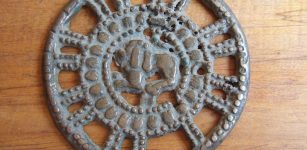 “Thogcha” – Thousand-Year-Old Tibetan Amulets And The Bon Culture
Ancient Technology | Dec 11, 2021
“Thogcha” – Thousand-Year-Old Tibetan Amulets And The Bon Culture
Ancient Technology | Dec 11, 2021 -
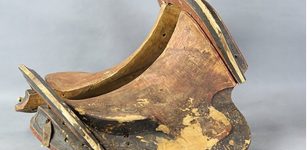 World’s Oldest Known ‘True’ Saddle Discovered In East Asia
Archaeology | Dec 11, 2023
World’s Oldest Known ‘True’ Saddle Discovered In East Asia
Archaeology | Dec 11, 2023 -
 Atlit Yam – Fate Of The 9,000-Year-Old Underwater Megalithic Site With A Huge Stone Circle
Featured Stories | Jun 14, 2021
Atlit Yam – Fate Of The 9,000-Year-Old Underwater Megalithic Site With A Huge Stone Circle
Featured Stories | Jun 14, 2021 -
 Trees Are Deeply Rooted In Beliefs And Cultural Traditions Of Ancient People Around The World
Featured Stories | Feb 18, 2018
Trees Are Deeply Rooted In Beliefs And Cultural Traditions Of Ancient People Around The World
Featured Stories | Feb 18, 2018 -
 Sam Bass Became Texas’s Beloved Bandit And Was Admired By The Poor
Featured Stories | Mar 23, 2021
Sam Bass Became Texas’s Beloved Bandit And Was Admired By The Poor
Featured Stories | Mar 23, 2021 -
 Runes Were Just As Advanced As Roman Alphabet Writing – New Study
Archaeology | Mar 3, 2023
Runes Were Just As Advanced As Roman Alphabet Writing – New Study
Archaeology | Mar 3, 2023 -
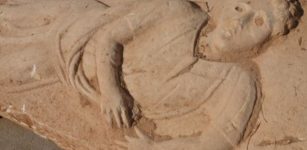 Unique 1,800-Year-Old Stone Sarcophagus Exposed In Ashkelon Building Site
Civilizations | Sep 6, 2015
Unique 1,800-Year-Old Stone Sarcophagus Exposed In Ashkelon Building Site
Civilizations | Sep 6, 2015 -
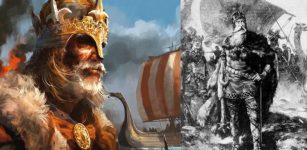 Berserkers: Icelandic Viking ‘Mad Warriors’ In The Army Of God Odin
Featured Stories | Apr 25, 2017
Berserkers: Icelandic Viking ‘Mad Warriors’ In The Army Of God Odin
Featured Stories | Apr 25, 2017 -
 Riddle Of The Ancient Sarcophagus And Its Strange Properties – Can Science Solve This Mystery?
Ancient Mysteries | Nov 7, 2019
Riddle Of The Ancient Sarcophagus And Its Strange Properties – Can Science Solve This Mystery?
Ancient Mysteries | Nov 7, 2019 -
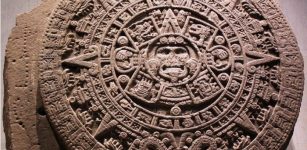 On This Day In History: Aztec Calendar Stone Rediscovered – On Dec 17, 1790
News | Dec 17, 2016
On This Day In History: Aztec Calendar Stone Rediscovered – On Dec 17, 1790
News | Dec 17, 2016 -
 Ancient Mystery Of The Enigmatic ‘Cat Men’ – Advanced Prehistoric Machines Or Humanoids? – Part 2
Ancient Mysteries | Jan 20, 2021
Ancient Mystery Of The Enigmatic ‘Cat Men’ – Advanced Prehistoric Machines Or Humanoids? – Part 2
Ancient Mysteries | Jan 20, 2021 -
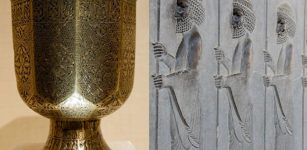 Cup Of Jamshid – Holy Grail Of Ancient Persia Offered Immortality And Visions Of The Future
Featured Stories | Jan 16, 2019
Cup Of Jamshid – Holy Grail Of Ancient Persia Offered Immortality And Visions Of The Future
Featured Stories | Jan 16, 2019 -
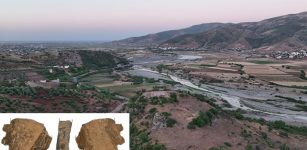 First Bronze Age Settlement Predating The Phoenicians Discovered In Maghreb
Archaeology | Mar 5, 2025
First Bronze Age Settlement Predating The Phoenicians Discovered In Maghreb
Archaeology | Mar 5, 2025 -
 Impressive Copper Age 5,000-Year-Old Fortification With Concentric Walls, Bastions, A Shallow Grave With A Man Face Down And A Dagger – Unearthed
Archaeology | Feb 17, 2025
Impressive Copper Age 5,000-Year-Old Fortification With Concentric Walls, Bastions, A Shallow Grave With A Man Face Down And A Dagger – Unearthed
Archaeology | Feb 17, 2025 -
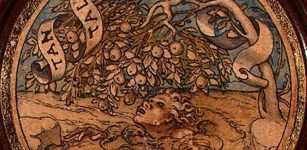 Tantalus – Greek King And Evildoer Who Violated Divine Laws And Was Sent To Tartarus
Featured Stories | Mar 1, 2019
Tantalus – Greek King And Evildoer Who Violated Divine Laws And Was Sent To Tartarus
Featured Stories | Mar 1, 2019 -
 Mythical Fiery Bird Phoenix In Mythologies Of Many Ancient Cultures
Featured Stories | Mar 23, 2017
Mythical Fiery Bird Phoenix In Mythologies Of Many Ancient Cultures
Featured Stories | Mar 23, 2017 -
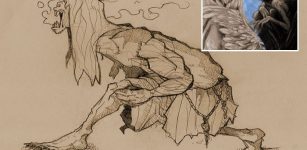 Strzyga (Strix): Slavic Malevolent Winged Female Demon With Two Souls That Usually Haunts Churches, Towers, Barns
Featured Stories | Aug 9, 2019
Strzyga (Strix): Slavic Malevolent Winged Female Demon With Two Souls That Usually Haunts Churches, Towers, Barns
Featured Stories | Aug 9, 2019

